CATEGORIES
TAGS
Best Qualcomm Stock – Expert Comparison 2025
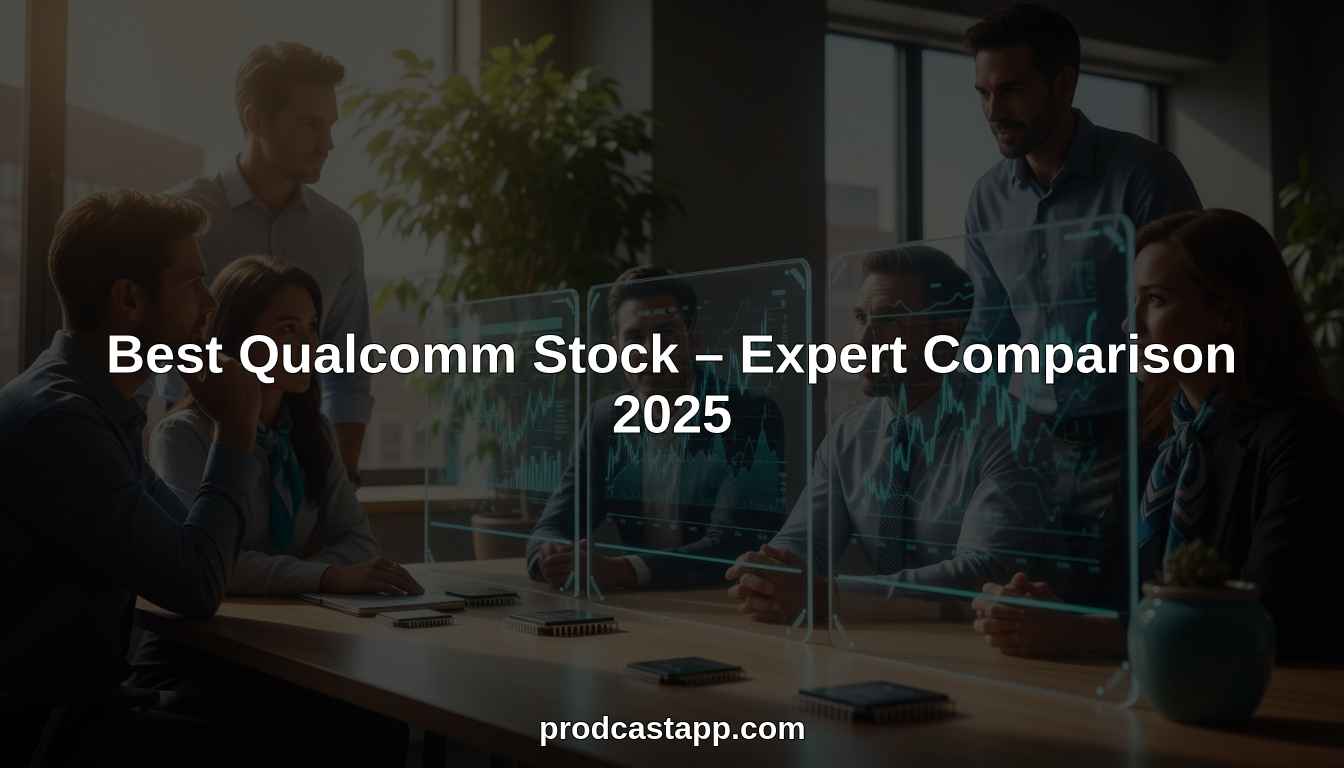
The way we listen, work, and connect with technology keeps changing. New ideas shape how we discover information, manage tasks, and experience digital content every day. From smarter searches and instant insights to powerful tools that run behind the scenes, the tools you choose can unlock new possibilities or make daily routines easier. Curious about which platforms are pushing boundaries and what makes each option different? Take a closer look and see what stands out.
Table of Contents
prodcast

At a Glance
Prodcast is an AI-powered platform that analyzes podcast transcripts to identify product mentions, key discussion moments, and expert insights. It turns spoken-word content into structured, searchable data so you can discover products and moments tied to hosts and genres you trust. For listeners and marketers alike, Prodcast delivers a fast, personalized path from discovery to action — whether that action is buying a recommended item or surfacing a memorable clip.
Core Features
Prodcast scans podcasts in real-time to detect product mentions and highlight interesting moments, then delivers a personalized feed based on your preferences. It offers direct purchase options for identified products and enables you to jump straight to specific podcast timestamps. Continuous monitoring with 24/7 analysis means trends and mentions are captured as they happen, and the platform packages those findings into digestible insights you can act on immediately.
Pros
- Instant discovery and action: You can find products and moments mentioned on podcasts and move from discovery to purchase without leaving the listening flow. This saves time and preserves context.
- Personalized feed: Prodcast tailors product and moment recommendations to your interests, so the content you see aligns with the genres and hosts you already trust.
- Trusted sourcing: Because results are pulled from real podcast conversations, recommendations come with authentic context from hosts and guests listeners respect.
- Simple, intuitive experience: The workflow—scan, surface, buy or jump—keeps discovery friction low and user steps minimal.
- Vendor relevance: Brands and vendors can showcase products within the exact podcast contexts where they matter, improving match rates and creative relevance.
Who It’s For
Prodcast is built for podcast listeners who want fast access to products and memorable moments mentioned on shows, and for marketers seeking real-time intelligence about what audiences hear and respond to. If you shop from creator recommendations, or you run marketing that needs precision placement and trend signals, Prodcast fits your workflow. And yes, if you’re the sort of user who bookmarks a great quote or a gear mention mid-episode, this will change how you interact with podcasts.
Unique Value Proposition
Prodcast’s core superiority is its combination of continuous, real-time transcript scanning with a commerce-enabled discovery layer: it doesn’t just tell you what was mentioned — it links that mention to a product action and a timestamped moment. That means marketers get a live window into what audiences are hearing; listeners get contextualized recommendations they can trust; vendors get targeted placement inside relevant conversations. Unlike simple recommendation engines, Prodcast maps spoken-word nuance into structured signals (product mentions, moments, insights) and keeps monitoring 24/7 so trends surface the moment they emerge. In short: it bridges audio content and commerce with precision, personalization, and immediacy.
Real World Use Case
A listener hears a fitness host praise a specific resistance band. With Prodcast, they locate the exact timestamp, read the host’s context, and buy the recommended band within minutes — or share the motivational clip with a friend. For marketers, that same mention becomes measurable data: which episodes, which hosts, and how often a product appears across the podcast ecosystem.
Pricing
Free to use, no spam ever
Website: https://prodcastapp.com
NVIDIA
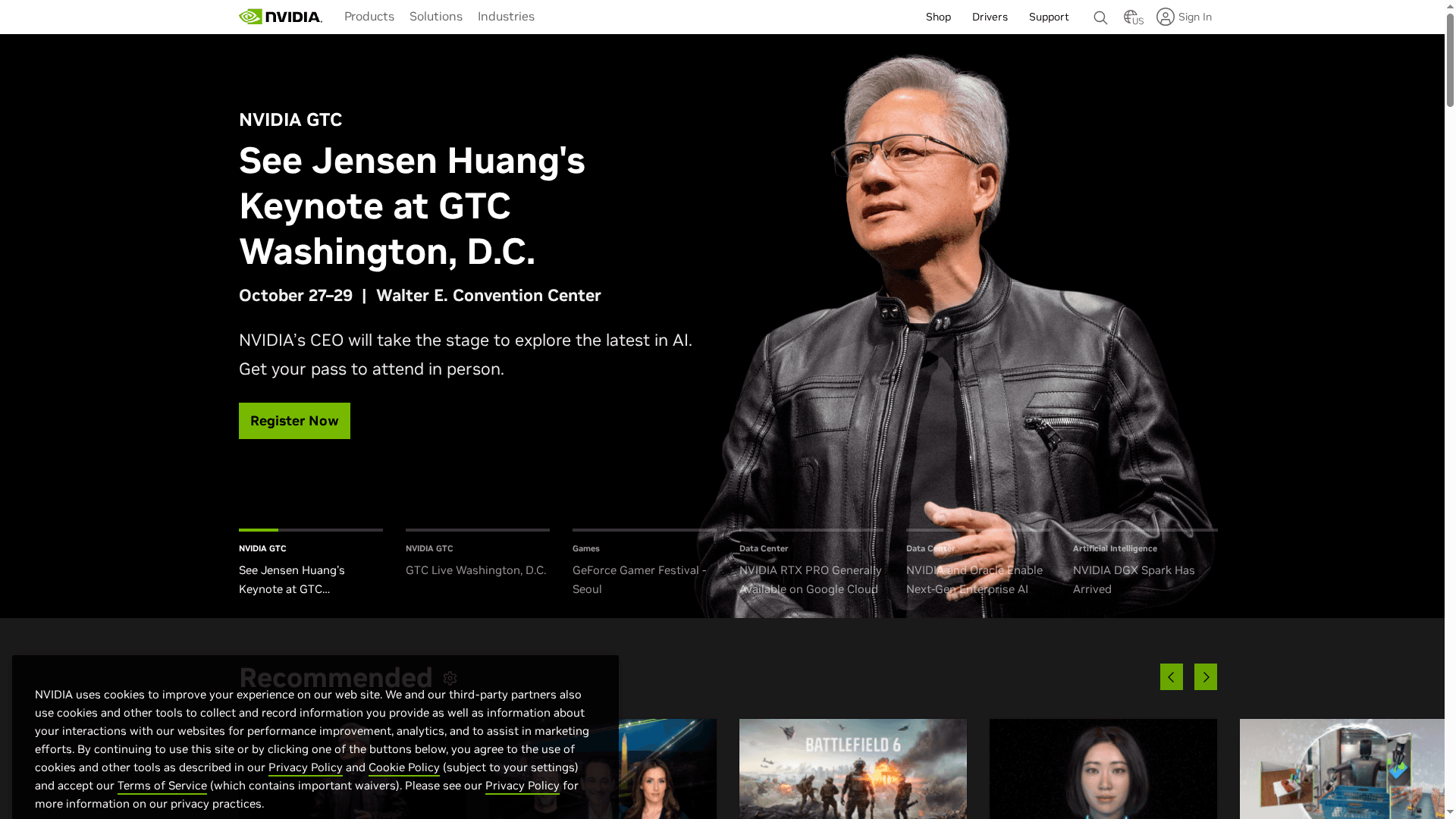
At a Glance
NVIDIA is presented as a global leader in AI computing and GPU technology, delivering platforms and hardware across data centers, gaming, automotive, and robotics. Bottom line: if you need cutting-edge GPU performance or comprehensive AI infrastructure, NVIDIA is a primary contender. The company’s breadth—from GeForce gaming cards to DGX systems and Omniverse simulation—makes it suitable for both creative workflows and enterprise-scale AI projects. Navigation and pricing details require extra legwork, which can slow decision-making for buyers.
Core Features
NVIDIA’s core capabilities center on accelerating computing with GPUs and AI platforms. Key offerings include DGX systems tailored for AI research, GeForce graphics cards optimized for gaming and creative work, Omniverse for 3D simulation and metaverse development, and data center solutions such as RTX Pro and AI-optimized clusters for enterprise workloads. These features combine hardware, software, and ecosystem-level tools designed to support tasks from model training and high-performance computing to real-time rendering and autonomous systems development.
Pros
- Leadership in AI computing and GPU technology is evident, which positions NVIDIA as a go-to for organizations seeking advanced acceleration and AI tooling.
- A wide product range spans gaming, professional, and enterprise markets, enabling users to find solutions whether they are hobbyist creators or large-scale data center operators.
- Active industry engagement through events like GTC amplifies innovation, helping users stay current with new techniques, SDKs, and partnerships.
- Innovative solutions for digital twins, robotics, and autonomous vehicles demonstrate practical AI applications, which helps enterprises prototype and deploy complex systems.
- Significant global investment in AI infrastructure underscores long-term commitment, giving customers confidence in ongoing platform support and ecosystem growth.
Cons
- Information is mainly product- and initiative-focused, with limited visibility into pricing or direct user support details, which makes procurement planning harder.
- The website is heavily marketing-oriented and covers a diverse product range, so locating specific technical or buying guidance may require time-consuming navigation.
- There is no specific mention of customer reviews or satisfaction metrics on the provided data, so third-party validation and user sentiment are not readily visible.
Who It’s For
NVIDIA is best suited for researchers, developers, enterprise IT professionals, gamers, and creative professionals who need high-performance GPUs and AI platforms. If you’re running machine learning experiments, building digital twins, rendering complex visuals, or developing autonomous systems, NVIDIA’s product mix aligns with those needs. Buyers who require transparent, off-the-shelf pricing or abundant user satisfaction data may need to contact sales or consult third-party reviews.
Unique Value Proposition
NVIDIA uniquely combines industry-leading GPU hardware with ecosystem platforms—like DGX for research and Omniverse for simulation—creating an end-to-end environment for AI, visualization, and high-performance computing that few competitors match in breadth and maturity.
Real World Use Case
Enterprises deploy NVIDIA systems to train medical imaging models, run ray-traced game engines with DLSS-enhanced performance, develop autonomous vehicle perception stacks, and build digital twins that simulate manufacturing and logistics workflows in real time.
Pricing
Not specified on the website; pricing likely varies by product and configuration.
Website: https://nvidia.com
Broadcom Inc.
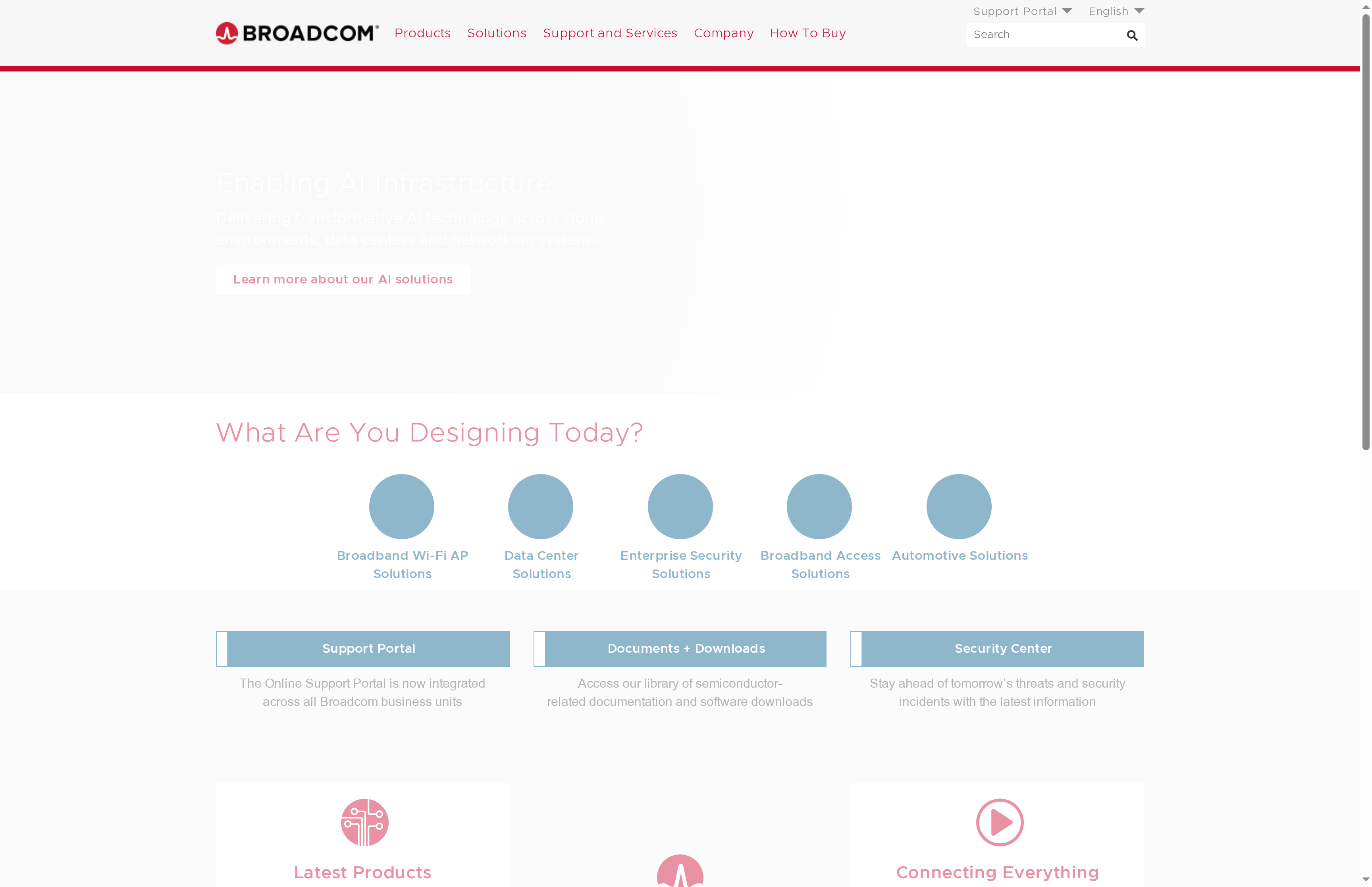
At a Glance
Broadcom Inc. is a global technology leader offering a wide-ranging portfolio of semiconductors, enterprise software, and security solutions tailored to cloud, data center, networking, wireless, and storage markets. Its scale and strategic collaborations — including work on AI accelerators — position it as a go-to supplier for critical digital infrastructure. That breadth brings strength and reach, but also complexity when you need to drill into a single product line.
Core Features
Broadcom’s core capabilities span comprehensive semiconductor design and enterprise-grade software plus security offerings. The company supplies components and systems for cloud and hybrid infrastructure, data center networking and storage, wireless connectivity (Wi‑Fi and Bluetooth), Ethernet switching, AI solutions, and security tools for service providers and enterprises. In short: Broadcom sells the hardware and software building blocks many modern networks and clouds rely on.
Pros
- Diverse product portfolio covering critical digital infrastructure markets: Broadcom serves cloud, data center, networking, wireless, storage, industrial, and enterprise segments, which reduces dependence on any single market.
- Focus on cutting-edge technologies such as AI, 800G Ethernet, and Wi‑Fi 8: The company emphasizes advanced platforms and connectivity standards that align with next‑generation infrastructure needs.
- Strategic collaborations like with OpenAI for AI accelerators: Partnerships amplify Broadcom’s credibility and accelerate adoption of its AI hardware solutions.
- Strong market presence and broad customer base: Broadcom’s global reach and large client list help ensure widespread deployment and long product lifecycles.
- Global reach and extensive product development capabilities: A worldwide footprint supports integration into large, geographically distributed deployments.
Cons
- Limited specific product details on individual solutions from the provided content: The summary-level information makes it hard to evaluate exact model capabilities, performance, or pricing for particular products.
- The broad scope may lead to complexity in navigating specific product offerings: Organizations seeking a single focused solution may find the range overwhelming without guided selection.
- Potential high competition in core technology areas: Operating across leading-edge markets inherently brings intense rivalry that could pressure margins and differentiation.
Who It’s For
Broadcom is best suited for companies and organizations that need advanced semiconductor, networking, security, and AI hardware and software at scale — especially cloud providers, large enterprises, and data center operators. If your environment demands high-performance connectivity, robust security, or AI accelerators integrated into hybrid or private cloud infrastructure, Broadcom is a candidate to evaluate.
Unique Value Proposition
Broadcom’s unique value lies in combining broad semiconductor IP and enterprise software with global distribution and strategic AI collaborations. That blend allows customers to source both the chips and enterprise-class software needed to deploy cohesive, high-performance infrastructure from a single vendor.
Real World Use Case
Broadcom’s wireless chips such as the BCM43109 are implemented in Wi‑Fi devices, while its Ethernet switches and NICs are used in data centers to connect servers with high‑speed networking capabilities—examples that show the company’s hardware sitting at the spine of modern connectivity and cloud stacks.
Pricing
Not specified in the available content.
Website: https://broadcom.com
Intel Core Ultra Processors
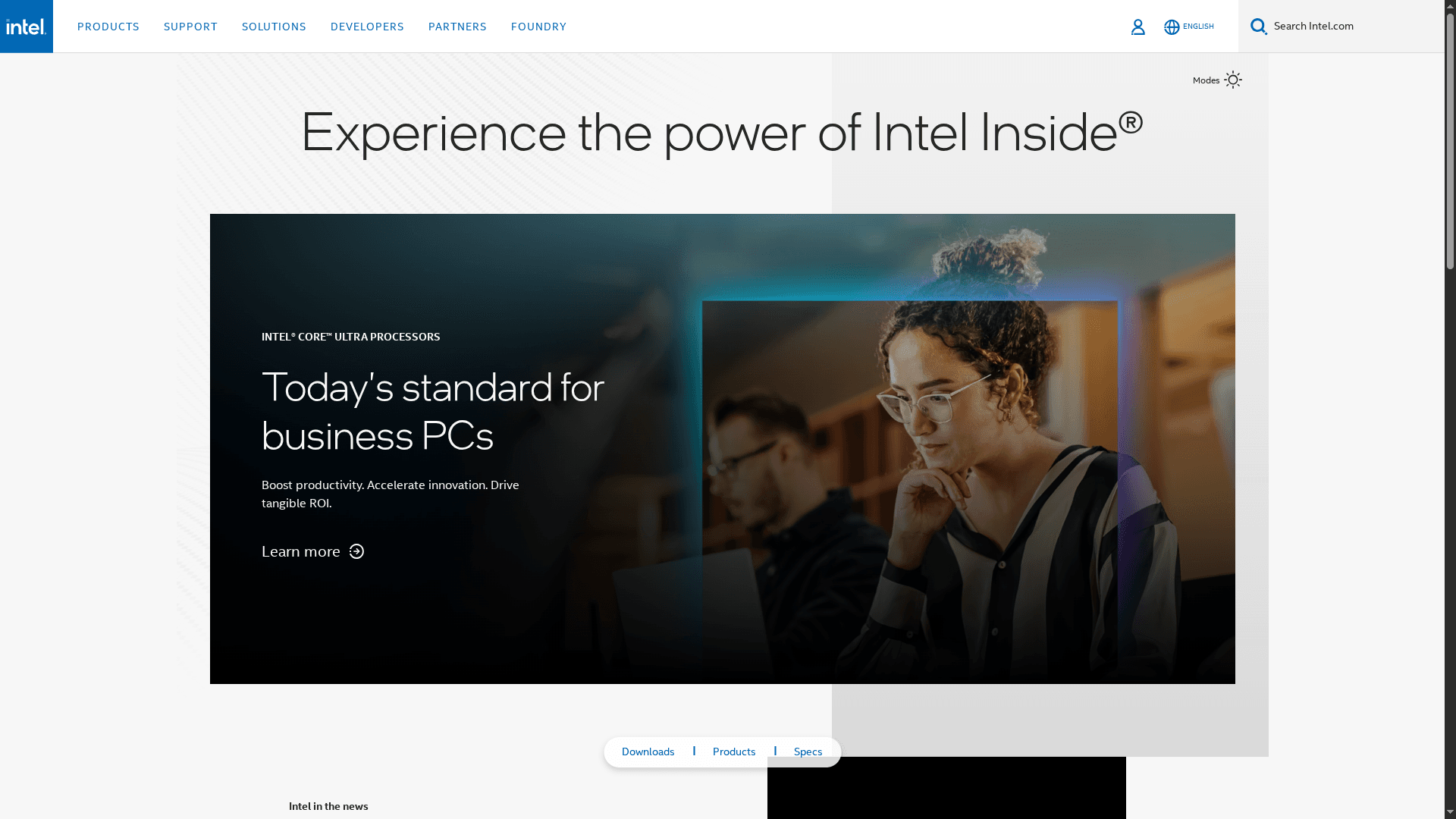
At a Glance
Intel Core Ultra Processors position themselves as high-performance engines for business PCs and enterprise workloads, with a clear emphasis on productivity, innovation, and long-term ROI. Intel pairs these processors with a broader portfolio—Xeon options, developer resources, and platform support for AI, cloud, edge, and HPC—to serve teams building and deploying advanced solutions. The company’s active collaboration with Nvidia signals an intent to expand AI capabilities across hardware and software stacks. Bottom line: a solutions-driven platform for IT leaders who prioritize ecosystem depth and developer support over commodity pricing.
Core Features
Intel’s offering centers on the Intel® Core™ Ultra family complemented by Intel® Xeon® processors for heavier compute needs. The platform includes developer resources and tools aimed at AI and software development, and support across AI PCs, edge devices, cloud infrastructure, and high-performance computing (HPC). A strategic collaboration with Nvidia is highlighted as part of an expanding AI ecosystem, and Intel presents a unified approach that blends processor hardware with tooling for deployment and optimization.
Pros
- High-performance processors for business and enterprise use: The product line targets demanding workloads and aims to boost productivity across business PC fleets and server environments.
- Strong ecosystem and developer support: Intel provides a breadth of resources and tools to help developers build, test, and deploy AI and software solutions on its chips.
- Innovative AI and computing technologies: The portfolio explicitly targets modern AI and HPC use cases rather than legacy desktop-only scenarios.
- Partnerships enhancing AI ecosystem growth: Collaboration with Nvidia suggests broader compatibility and joint optimization opportunities for AI workloads.
- Comprehensive resources for developers: Documentation, tools, and platform support are positioned as central pillars for adoption and ramp-up.
Cons
- Website experience may be hindered by outdated browser compatibility issues: Users could face friction accessing resources if their browsers or tooling are not fully supported.
- Specific product details and comparisons are limited in the provided content: The material lacks granular specs and direct model-to-model comparisons that buyers often need to choose hardware precisely.
- Potentially high cost of high-end processors: Enterprise-grade CPUs and supporting platform investments can be expensive, impacting ROI calculations for smaller teams.
Who It’s For
This product suite is aimed squarely at IT professionals, enterprise developers, and technology decision-makers who need advanced processors and a robust tooling ecosystem for business, AI development, and HPC environments. If you manage fleets of business PCs, oversee cloud or edge deployments, or lead AI infrastructure initiatives, this portfolio is built for you.
Unique Value Proposition
Intel’s strength here is ecosystem integration: processor families that span Core Ultra to Xeon, paired with developer tooling and strategic partnerships (notably with Nvidia) to accelerate AI adoption. Rather than selling chips alone, Intel markets a complete pathway—from hardware selection to software deployment—intended to reduce time-to-value for enterprise projects.
Real World Use Case
A company upgrades its business PCs to Intel Core Ultra processors to lift productivity for knowledge workers, while enterprise AI teams leverage Intel’s developer resources and Nvidia collaboration to build, test, and deploy models across cloud and edge environments.
Pricing
Not specified in the provided content.
Website: https://intel.com
AMD (Advanced Micro Devices)
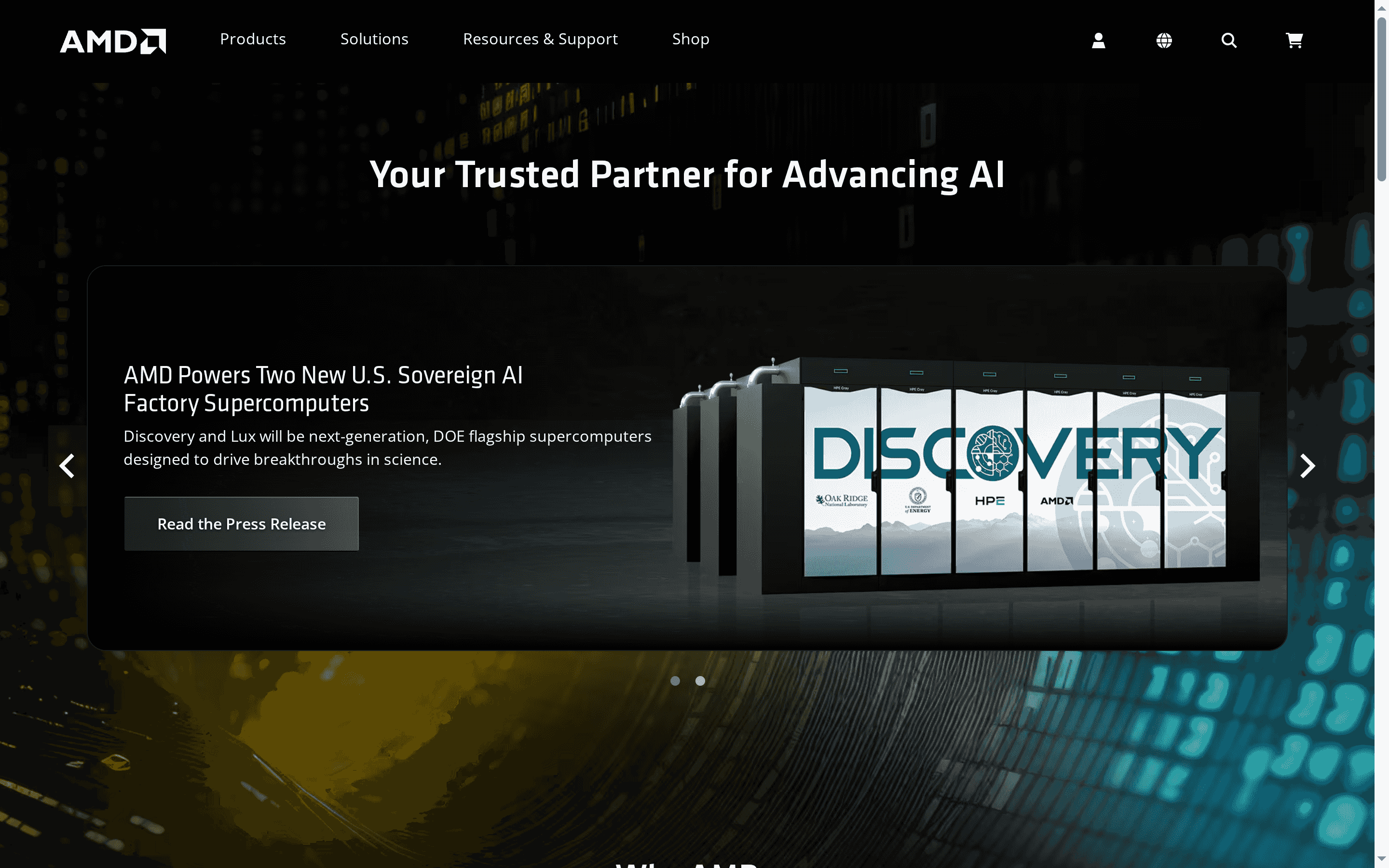
At a Glance
AMD is a comprehensive provider of AI and high-performance computing building across CPUs, GPUs, and adaptive solutions. Its open ecosystem and ROCm software support make it a pragmatic choice for organizations that need scalable AI from edge devices to supercomputers. The company is clearly enterprise- and research-focused rather than consumer-centric, so expect solution-tailored deployments rather than boxed retail products.
Core Features
AMD’s portfolio spans end-to-end AI capabilities: CPUs, GPUs, and adaptive computing hardware designed for data centers, edge, and endpoint use. The company emphasizes an open ecosystem and co-innovation with partners to encourage interoperability and flexibility. Its software foundation (AMD ROCm) supports AI development and deployment, while a focus on efficiency and total cost of ownership (TCO) aims to deliver competitive AI performance across workloads.
Pros
- Comprehensive hardware stack: AMD offers integrated AI hardware across CPU, GPU, and adaptive computing, enabling unified designs for heterogeneous workloads.
- Open standards and collaboration: The company’s open ecosystem approach fosters vendor flexibility and co-innovation, which can reduce vendor lock-in for large projects.
- Demonstrated AI leadership: AMD positions itself around industry-leading efficiency and AI performance, which is attractive for performance-sensitive deployments.
- Proven in high-profile projects: Engagements like supercomputers and sovereign AI initiatives show the portfolio can scale to demanding scientific and national workloads.
- Strong partnership network: Collaborations with cloud and enterprise partners enhance deployment options and integration into existing stacks.
Cons
- Pricing is opaque: Specific product pricing details are not provided on the site, which makes budgeting and procurement planning more difficult without direct vendor engagement.
- Steep technical complexity: The breadth of the product portfolio means optimal deployment often requires specialist knowledge and integration expertise.
- Enterprise focus limits consumer reach: AMD’s emphasis on enterprise, research, and government use cases means few direct consumer-targeted AI products are available.
Who It’s For
AMD is best for organizations that need scalable, high-performance AI and computing solutions: data centers, research institutions, cloud providers, and enterprise developers building on-prem or hybrid AI infrastructure. If you manage large models, scientific simulations, or sovereign infrastructure, AMD is a strong candidate. If you’re a casual consumer seeking a plug-and-play device, this isn’t the primary target.
Unique Value Proposition
AMD combines a broad hardware stack with an open-software philosophy and partner ecosystem, which together enable flexible, scalable AI solutions from edge to supercomputer. That combination—hardware depth plus open ecosystem—helps organizations tailor systems to specific workloads without being forced into a single-vendor lock-in.
Real World Use Case
AMD powers U.S. sovereign AI supercomputers used for scientific research and innovation, demonstrating its capability to support large-scale, mission-critical AI workloads that require efficiency, interoperability, and high throughput.
Pricing
Not specified on the website; pricing likely varies by product, configuration, and use case and typically requires quotes through sales channels.
Website: https://amd.com
Technology Solutions Comparison
This table provides a concise overview of several technology platforms and their features, targeted audiences, unique value propositions, and pricing insights.
| Product | Features | Pros | Cons | Pricing |
|---|---|---|---|---|
| Prodcast | AI-powered, real-time podcast transcript analysis; searchable product mentions and timestamps | Instant discovery and action; personalized feed; trusted sourcing | Limited to podcast-based data discovery; platform-specific | Free |
| NVIDIA | GPUs, AI platforms, DGX systems, Omniverse simulation, AI-optimized clusters | Leading AI/GPU technology; wide market range; industry engagement | Pricing visibility issues; marketing-heavy site navigation | Not specified |
| Broadcom Inc. | Semiconductors, enterprise software, security solutions, AI accelerators | Diverse portfolio; advanced tech focus; strategic collaborations | Product complexity; evaluation of specific solutions is difficult | Not specified |
| Intel Core Ultra | High-performance processors, AI development support, strategic Nvidia partnership | Strong ecosystem; innovative AI technologies; developer resources | Website compatibility issues; high cost for high-end models | Not specified |
| AMD | CPUs, GPUs, adaptive computing hardware, open ecosystem (ROCm software support) | Comprehensive hardware stack; demonstrated AI leadership; strong partnerships | Pricing opacity; technical complexity for implementation | Not specified |
Discover What Drives the Best Qualcomm Stock Buzz Across Podcasts
Investors and tech enthusiasts often struggle to track real-time insights about Qualcomm’s standing in the market and the specific factors shaping expert opinions. The challenge lies in quickly identifying authentic discussions from trusted voices that reveal emerging trends, product launches, or competitive advantages. If you want to avoid missing critical moments and jargon-filled analysis, there is a smarter path.
Prodcast is designed precisely for this need. Our AI-powered platform analyzes podcast transcripts in real time to spotlight when Qualcomm and related technologies are mentioned, uncovering expert insights and key discussion points. Whether it is investor advice or product innovation chatter, you get structured, searchable data that lets you follow the Qualcomm story exactly as it unfolds. You can see how Qualcomm products or strategies stack up among competitors, all linked to authentic podcast contexts you trust.
Make your Qualcomm stock research smarter and more actionable.
Explore targeted podcast moments and product mentions by diving into Prodcast’s homepage for immediate insights.

Ready to turn in-depth audio discussions into data-driven investment intelligence? Visit Prodcast now and start tracking the latest Qualcomm trends mentioned by top market experts. Don’t just read about stocks — experience the power of real-time podcast analytics that keep you ahead in 2025.
Frequently Asked Questions
What factors should I consider when comparing Qualcomm stock in 2025?
When comparing Qualcomm stock in 2025, focus on revenue growth, market position, and technological advancements. Analyze financial reports and market trends to gauge the company’s future performance and make informed investment decisions.
How can I evaluate the potential risks associated with investing in Qualcomm stock?
To evaluate risks, assess market competition, regulatory impacts, and global supply chain dependencies. Review historical performance and analyst forecasts to identify volatility and formulate a risk mitigation strategy.
What are the key performance indicators (KPIs) to look for in Qualcomm’s financial reports?
Key performance indicators include revenue growth rate, profit margins, earnings per share (EPS), and cash flow. Regularly monitor these KPIs in quarterly reports to stay updated on Qualcomm’s financial health and operational efficiency.
How do Qualcomm’s technological innovations impact its stock value?
Qualcomm’s innovations, especially in 5G technology and semiconductor advancements, directly influence investor confidence and stock valuation. Stay informed about new product launches and partnerships, as these can lead to significant stock price movements and potential growth opportunities.
What should I do if I want to invest in Qualcomm stock starting in 2025?
To invest in Qualcomm stock, start by setting your investment goals and budget. Open a brokerage account and monitor stock performance; consider gradually building your position over time, especially during market dips for better price averages.
How often should I review my Qualcomm stock investment in 2025?
Review your Qualcomm stock investment at least quarterly to align with earnings reports and market changes. Adjust your strategy as needed based on performance metrics, market trends, and any shifts in the technology landscape.
Recommended
- Taiwan Semiconductor Manufacturing - Featured in World Leading Investing Expert: The Big Shift Is Coming! This Investment Could 15x in 5 Years! | Prodcast
- Roblox - Featured in World Leading Investing Expert: The Big Shift Is Coming! This Investment Could 15x in 5 Years! | Prodcast
- Samsung Galaxy S25 Ultra - Featured in Joe Rogan Experien… | Prodcast
- How to Find Trending Products for 2025: A Step-by-Step Guide | Prodcast